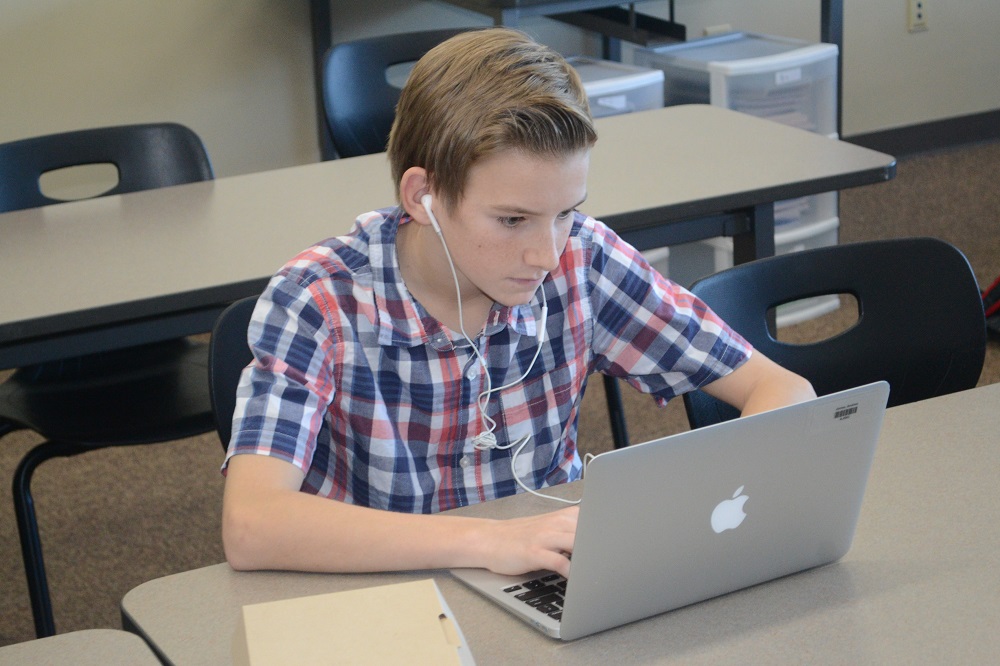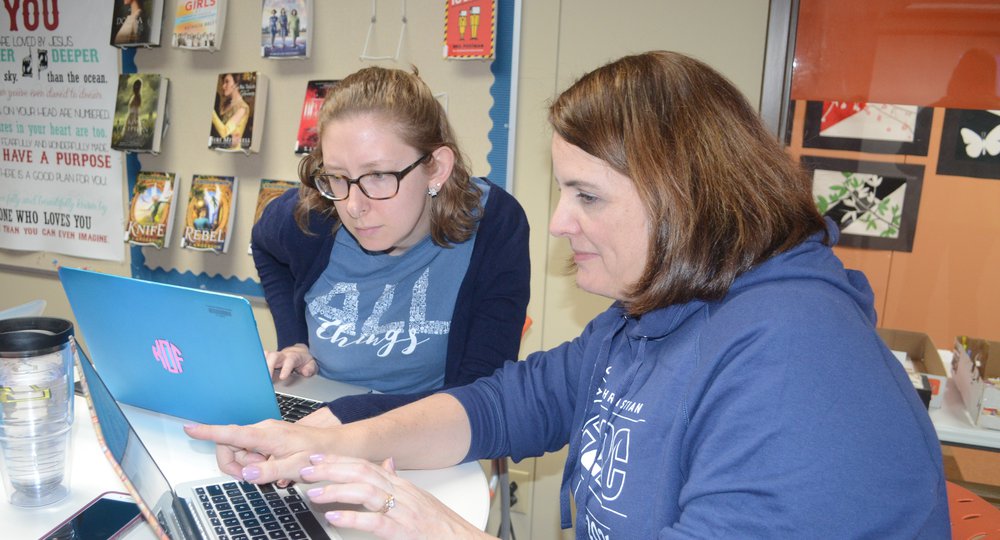As the educational landscape shifts into a pedagogy that incorporates 21st century skills, the 4 C’s, and individualized learning, transforming into a 1:1 school has been an important change for GRACE Christian School.
While we are intentional with teaching technology skills to students as opposed to simply teaching technology tools, there are still important, foundational tools that make the instruction that we do possible.
Getting started with 1:1
When we originally began our 1:1 initiative, there was a lot of confusion for students in terms of
organization and expectations. Different teachers had different methods for submitting assignments, such as dropbox, email, or hard copy. It was frustrating for students to remember which teacher required which format. This frustration ended with the implementation of our Learning Management System from NEO.
Teachers and students suddenly had a foundational baseline for turning in assignments, communicating, and receiving work. The LMS became an interactive hub for task management, so now teachers and students are free to focus on the content of the curriculum.
Offering a way to streamline these managerial tasks has been an organizational essential for teachers at GRACE. Implementing an LMS has also provided a way for students to keep track of their work anytime and anywhere, since it can be accessed online. If a student is out sick, he or she knows ahead of time what they missed. If inclement weather forces us to cancel school, teachers are able to stay on track by delivering assignments and instruction online.
Furthermore, many of the physical resources at GRACE became digital resources with our switch to 1:1 - more content-rich digital textbooks, blogs, wikis, and other online tools to exchange digital content with students became the standard. Project options extended into digital products that could then be shared and submitted online through NEO.
How an LMS enhanced the 1:1 initiative
In this respect, the move to an LMS to deliver teaching and learning has helped us extend our vision for what learning looks like at GRACE. When we began the 1:1 program, we were focused on simply engaging students; however, as our teachers, classes, and lessons evolved, empowerment through technology is becoming the focus of where we are headed as a school. We don’t just want to use a tool for the sake of grabbing a student’s attention during a lesson. We want students to invest and take ownership of their learning and experience the content in transformative ways through what they discuss and what they produce, often for the real world and a real audience. Many of the tools that the NEO LMS offers are a natural part of this shift.
With the LMS, teachers have a central location for uploading flipped videos, run discussion boards, break students into groups, share resources, and do quick formative assessment quizzes, among other things. If a teacher had to go out and find separate websites and tools for each of these tasks, many might give up and fall back on what they have done previously, and discover new ways of instruction - not because they don’t care, but simply because sometimes too much choice can be overwhelming. Our LMS has solved this with a system for all those activities, and allows for some powerful learning opportunities for both teachers and students.
Getting teachers on board with a new LMS
Introducing teachers to our LMS is an activity that takes some care. We are cautious about not overloading our teachers with too much information right away. We have created short tutorial videos for the basic interface, functions, and day-to-day applications of the system, specific to our school. These tutorials are included in a Livebinder of all our introduction material, and teachers can work through the videos over the summer at their own pace. Once we hit our pre-service days, they usually already have questions that we help answer as we give more individualized instruction before the school year starts.
We realize and take into account that teachers are approaching technology from various experience levels, so we want to meet them where they are currently, and then gently push them further. For example, one of the first tasks we make sure all teachers are able to do is make their classes, upload content, and post their assignments to the calendar.
As teachers who are new to the LMS accomplish these small tasks, we make sure we are available for any of their concerns, and then, when they are ready, begin asking them to play around with some of the other features that interest them. Adult “play time” in the system is important. Because there are many different tools available in NEO, teachers may approach how they deliver content through it differently, and we want to encourage teachers to do what works best for them and makes the most sense for their classes. While we often utilize many online tools and applications for involved lessons and projects, our LMS remains the backbone for delivering our content, tools, and resources, allowing us to go further with this type of instruction.
Infrastructure challenges
As we implemented a 1:1 initiative and added the LMS, there were some hardware issues we had to consider. We had an open wireless infrastructure prior to NEO. That infrastructure was replaced with enterprise grade access points. Access points were populated in key areas and are constantly under improvements and being expanded to give the best coverage possible. Security remains a priority and we are constantly seeking best practices to offer the best reasonable security to end users.
While we strive for student empowerment through technology to foster learning and growth, we could not be developing as gracefully or as organized without the implementation of a good learning management system. It is, in effect, our “hub” for online content, which teachers then use as a jumping on point to extend their lessons and instruction, allowing students to pursue passions, interact with mentors, share learning, and impact the world.
Daniel O'Brien is the Media Specialist at GRACE Christian School











